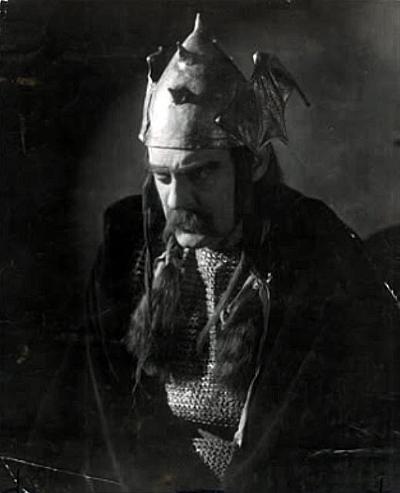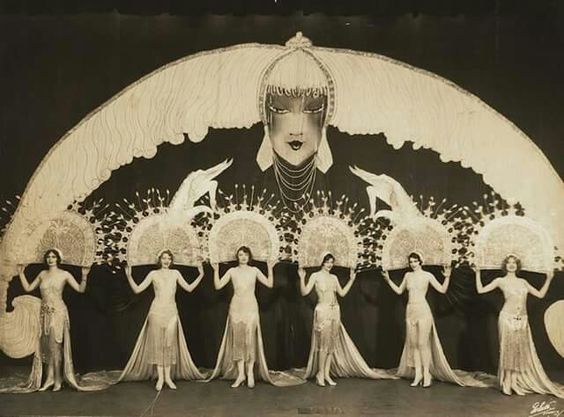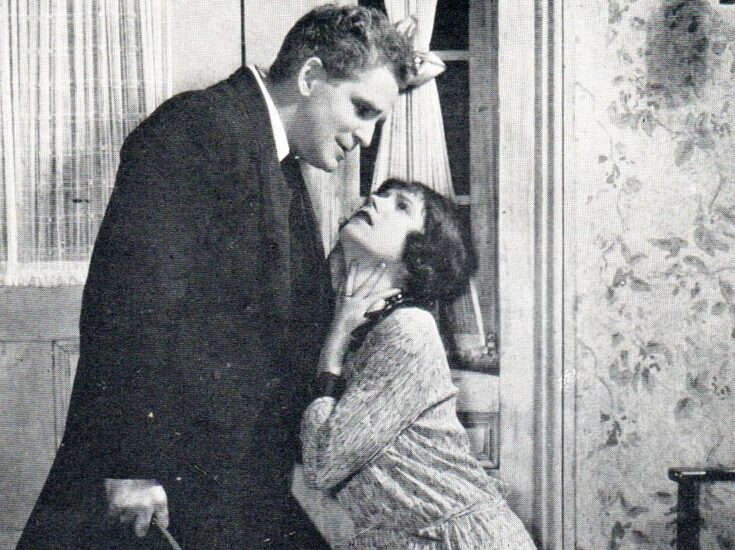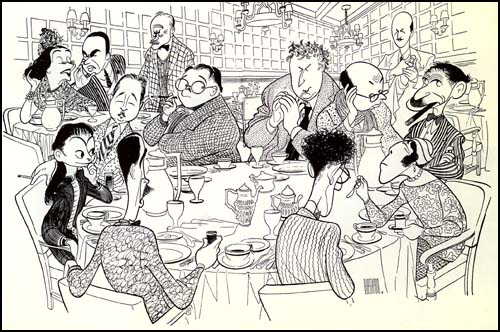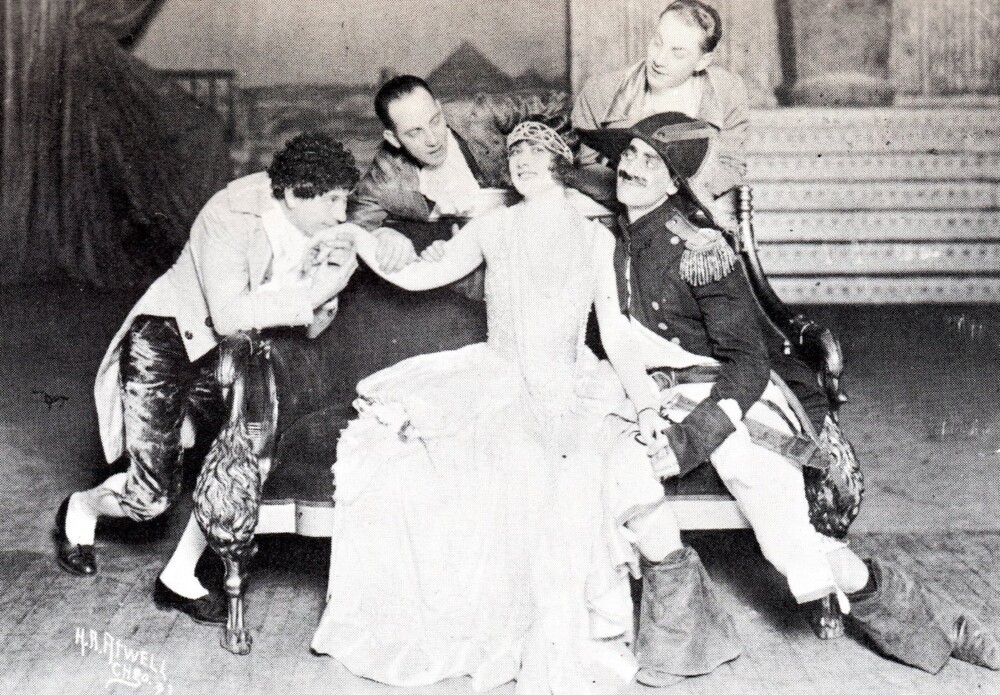
By Samuel L. Leiter
There were at least sixteen shows that could be classed as revues during the 1923-24 season, almost all of them on Broadway. That includes The Greenwich Village Follies, which had abandoned its bohemian homeland a couple of years earlier. All that could truly claim to be an Off-Broadway revue was the appealing Grand Street Follies, ensconced at 466 Grand Street on the Lower East Side, probably the oldest still active Off-Broadway venue in Manhattan.
For the record, the shows qualifying here for revue status, along with their theatres and opening dates, were, in chronological order, George White’s Scandals of 1923 (Globe, 6/18/23), Fashions of 1924 (Lyceum, 7/18/23), The Newcomers (Ambassador, 8/8/23), Artists and Models (Shubert, 8/20/23), The Greenwich Village Follies (Winter Garden, 9/20/23), Music Box Revue 1923-1924 (Music Box, 9/22/23), Nifties of 1923 (Fulton, 9/25/23), Hammerstein’s 9 O’Clock Revue (Selwyn, 10/8/23), Ziegfeld Follies of 1923 (New Amsterdam, 10/23/23), Topics of 1923 (Broadhurst, 11/20/23), André Charlot’s Revue of 1924 (Times Square, 1/9/24), Vogues of 1924 (Shubert, 3/27/24), I’ll Say She Is! (Casino, 5/19/24), Innocent Eyes (Winter Garden, 5/20/24), The Grand Street Follies (Neighborhood Playhouse, 5/20/24), Round the Town (Century Roof, 5/21/24), and Keep Kool (Morosco, 5/22/24).
Many of these were already brand names making regular appearances, others were trying to begin their own legacies, and still others were one-shots, some lavish, some low-budget. This was a time when revues, vaudeville, and even so-called book musicals had a way of bleeding from one competing genre into the other, with the accent mainly on musical, terpsichorean, and comedic entertainers who mostly crossed easily among the available formats.
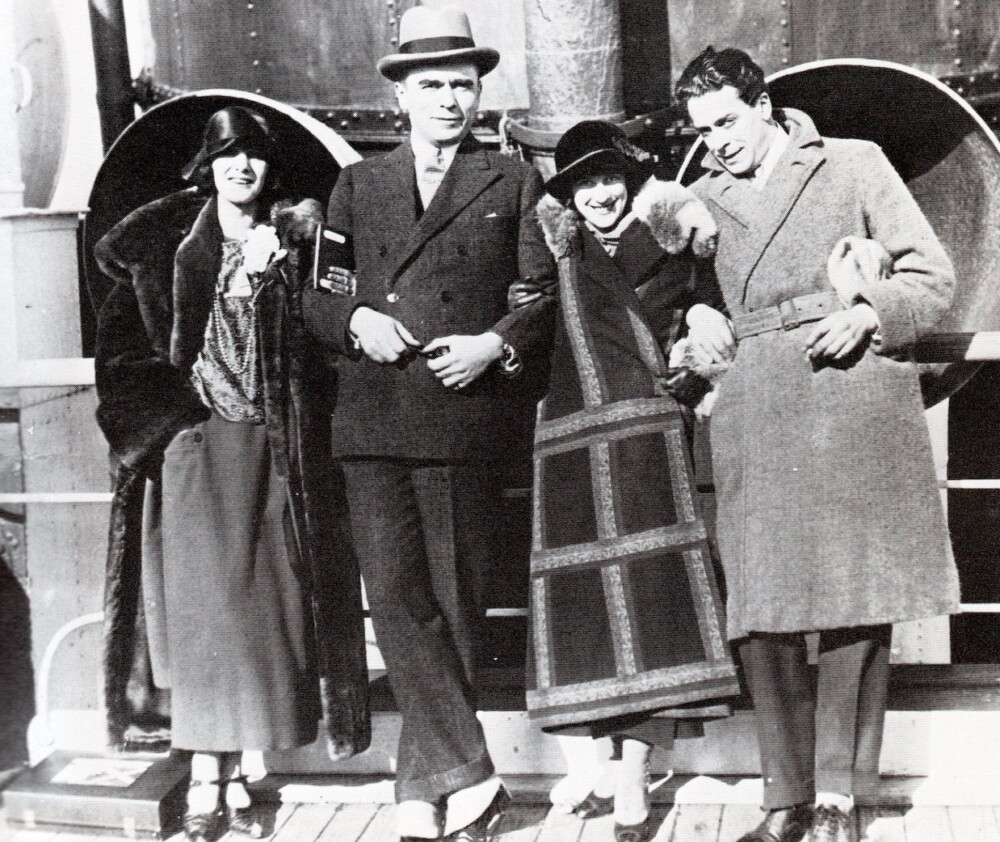

The five revues covered here are The Greenwich Village Follies, Ziegfeld Follies of 1923, André Charlot’s Revue of 1924, I’ll Say She Is!, and The Grand Street Follies. What follows is based on and supplements Holly Hill’s 1923-1924 entries in my Encyclopedia of the New York Stage, 1920-1930.
Like the third and fourth, the fifth iteration of The Greenwich Village was still on Broadway, but it shifted its home from the Shubert to the Winter Garden, where it totaled 131 performances. Its book was by Lew Fields, its music by Louis A Hirsch and Con Conrad, its lyrics by Irving Caesar and John Murray Anderson, and its direction by Fields and Anderson. These were all A-list creatives, as were choreographers, Larry Ceballos and Michio Ito. Its trio of designers included the estimable James Reynolds, with Reginald Marsh contributing one of his distinguished curtains, depicting a nostalgic image of Washington Square Park in days gone by but still remembered.
James Craig found the revue’s distinguishing feature its costuming, and the Times commented that Anderson had “contributed “a number of hauntingly beautiful scenes.” But he yawned at “The Gardens of Karma,” a Ballet Ballad fantasy (one of Anderson’s specialties) inspired by Laurence Hope’s “Indian Love Lyrics,” set to the music of Amy Woodforde-Finden, and featuring Martha Graham before she became the goddess of modern dance. Another Ballet Ballad was “The Raven,” based on Edgar Allan Poe’s poem. Craig was especially impressed by the dances here and in a Spanish fiesta number in the Velazquez style, with Graham dancing to the clicking of castanets. A memorable number was “Moonlight Kisses,” in which tragic heroines of history and literature (think Mary Stuart), were envisioned as the song was sung.
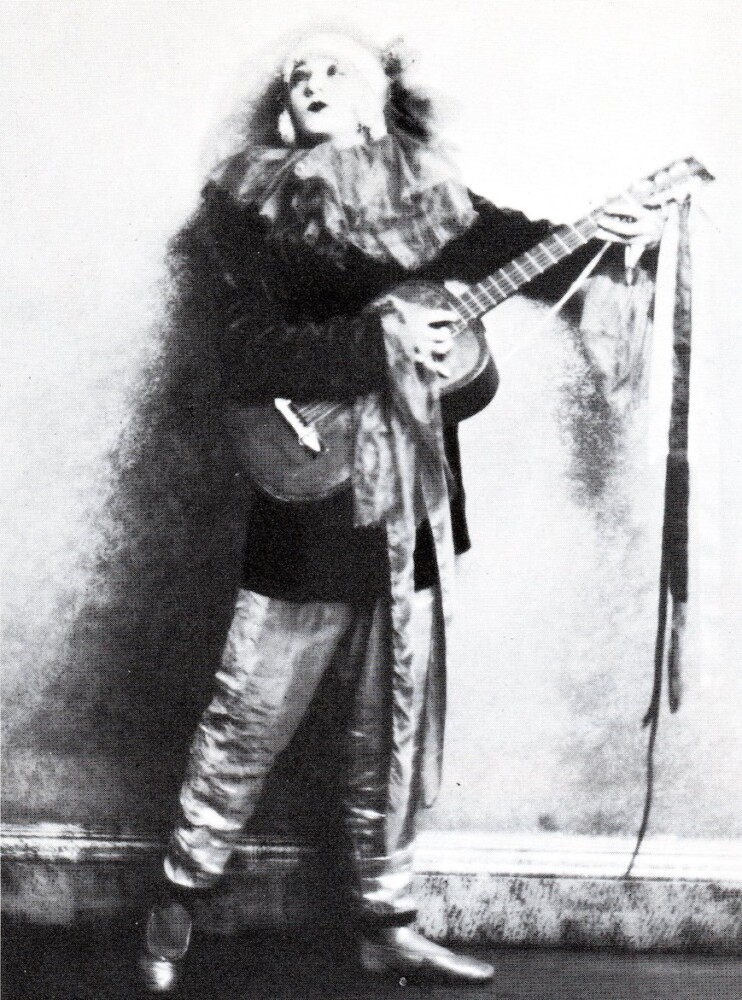

Craig complained, however, that there wasn’t enough comedy, although “diminutive Daphne Pollard, the English comedienne, did some first-rate clowning,” and Tom Howard, a former low comedian in Minsky’s burlesque shows, used his rube-like affect in some funny sketches. The Times considered a starving-on-a-raft bit to be hilarious. Praise was bestowed on the dancing skills of Martha Graham and Ula Sharon, the bolero dancing of the Spanish Cansinos (their daughter would be known as Rita Hayworth), the show-stopping Buster West, and the acrobatic Mandells. The Times noted that the chorus was large, beautiful, and generally underdressed.
Members of the company included Joe E. Brown, Marion Green, a lavishly dressed female impersonator named Karyl Norman (“The Creole Fashion Plate”), and the petite comedy duo of Eva Puck and Sammy White, who would score nicely in 1927’s Show Boat.
As expected, this season’s Ziegfeld Follies, the eighteenth in the franchise, was a money-maker, but it showed signs that the series was beginning to stagnate. Eddie Cantor and Gene Buck did the book, Victor Herbert and Rudolf Friml, along with Buck and Dave Stamper wrote the music for Buck’s lyrics, the great set designer Joseph Urban was on board, and so were big-name show biz costumers Ben-Ali Haggin, Tappé, Alice O’Neill, Erté, and James Reynolds, helping the show ride out 233 performances.
This was Fannie Brice’s last Follies and the first for vaudevillians Bert and Betty Wheeler. Both were welcomed warmly, although the thinness of their material was lamented. The Times rated Brice at her best when playing an entertainer in an amateur night show, joined by band leader Paul Whiteman on the fiddle. Heywood Broun found a skit in which Bert Wheeler tried to sing and eat a sandwich at the same time “one of the happiest notions we have encountered in a long time.”


Called a “public rehearsal,” the opening night ended slightly after 2 a.m. Said the Times, “it was commonly agreed that three hours of excellent entertainment were contained in the five and a quarter hours that Mr. Ziegfeld had just revealed.” Standout numbers were “Maid of Gold,” featuring dancer Muriel Stryker painted gold (until a doctor forbade it because of its danger), and “The Legend of the Drums,” a Napoleonic pageant designed by James Reynolds, which ended with a simulated fire of burning war drums.
The show underwent various changes during its run. At one time or another performers such as Ann Pennington, brunette ballerina Lina Basquette, modern dress pioneer Doris Humphries, Brooke Johns, and singing comedienne Edna Leedom (wife of Gene Buck), to name a few, appeared in it. Cantor did service for a brief while, as did boxer James J. Corbett (sports figures were frequent stunt participants in vaudeville and revues). Not much of a permanent nature was found in the tunes, but Friml’s “Chansonette,” used for a tableau designed by Haggin, was later developed into the popular “Donkey Serenade.”
French-born André Charlot had gained success in London with his unique variety of intimate revues. Selecting the best from several of such shows, he came to and conquered Broadway with this charming, 288-performance show that introduced New Yorkers to England’s Gertrude Lawrence and Canada’s Beatrice Lillie, both destined for enormous popularity on these shores. Noël Coward’s songs and sketches were a significant contribution—he and “Gertie” Lawrence, friends and collaborators since childhood and throughout their golden years—and Alexander Woollcott chose “Parisian Pierrot” and “There’s Life in the Old Girl Yet” as Coward’s outstanding contributions. Here’s Julie Andrews recreating “Parisian Pierrot” in Star, the biopic of Lawrence’s life.
Percy Hammond thought Lawrence, who sang the show’s biggest hit, “Limehouse Blues,” beguiling. The song (music by Philip Braham/lyrics by Douglas Furber) had been introduced in London by Teddie Gerard, but Lawrence was so successful with it in New York it became one of her trademarks.
Heywood Broun described Lillie, whose comic impersonations, including an aging soubrette and a march leader (in the greatly liked “March with Me”) bungling up her ranks, as “that quite unusual person, an admirable female clown. . . . Miss Lillie manages to be slim, beautiful and enormously funny all at the same time.”
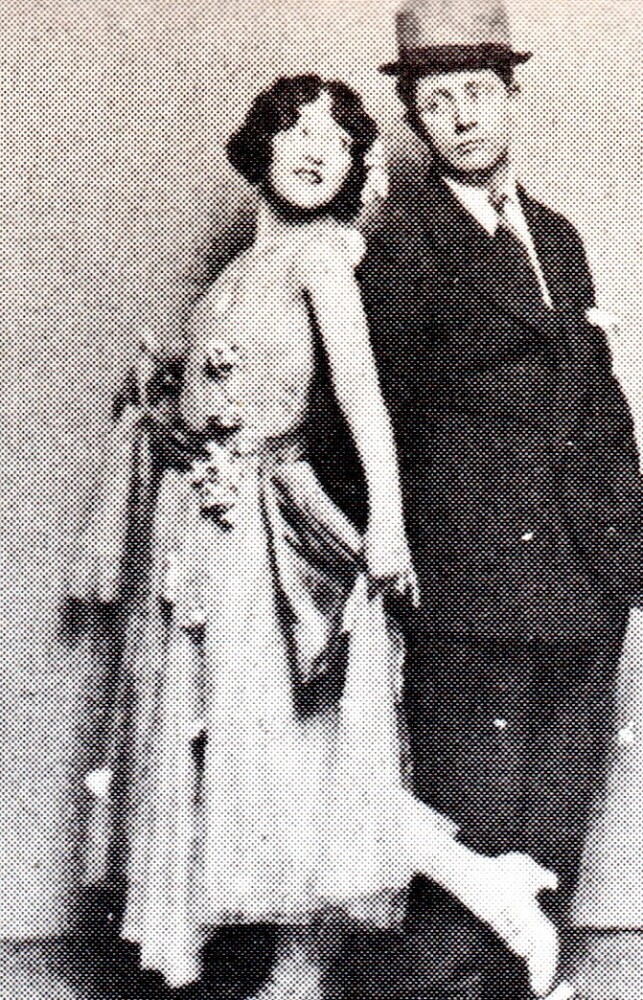

In A Star Danced, Lawrence claimed that producer Arch Selwyn wanted to cut the “March with Me” number after he saw it in rehearsal. Charlot refused to remove it and it became “the outstanding hit of the Revue.” Also commended was sophisticated singer-dancer-light comedian Jack Buchanan. Another appreciated entertainer was Herbert Mundin.
I’ll Say She Is! just manages to qualify as a revue even though it had a slender plot (by Will B. Johnstone, supplemented by Tom Johnstone’s music) on which to pin the crazy antics of the four Marx Brothers, Groucho, Harpo, Chico, and Gummo. Their reward for leaving the Keith vaudeville circuit to step up to Broadway stardom was a 313-performance run.
The Times noted of the first-night audience that both those familiar and unfamiliar with the brothers’ antics “joined equally in the boisterous laughter. Such shouts of merriment have not been heard in the Casino these many years.” Percy Hammond found the show funny but not special except for the brothers, who made up “a comic carnival.” In addition to the Marx quartet, Q.M. noted, there was a half-nude Apache dance and lovelier chorines than were even necessary considering the “hilarious nonsense all evening.” Lotta (formerly Carlotta) Miles was cited as a good singer and great beauty.
The 24-scene show’s slender storyline was about Beauty (Miles) seeking thrills. Her trip to a Chinatown opium den (the site of the Apache dance) leads to a charge of murder on which Groucho defends her. Dabbling in hypnosis lands Beauty in a dream sequence in which she is Josephine, Groucho is Napolean, and his brothers are Josephine’s lovers.
Groucho and Harpo received the most praise, Q.M. commenting that there must have been a time when Ed Wynn and Leon Errol, two of the great comics of the day, gave such promise as future laugh machines.
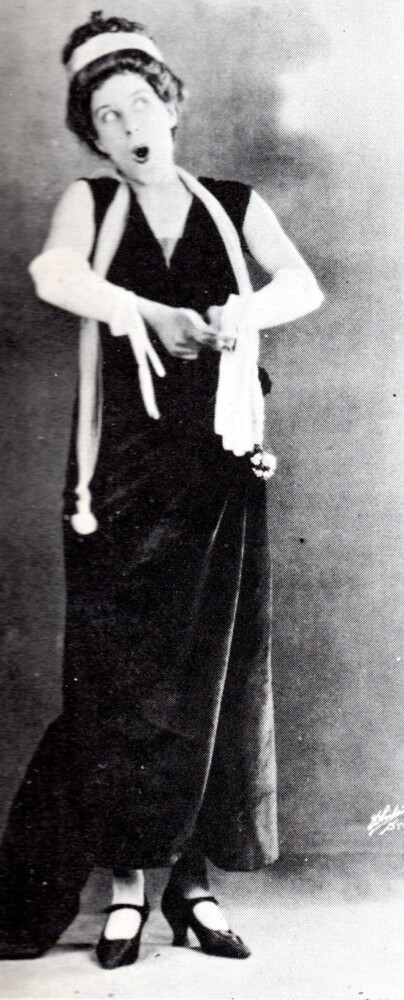

Moving to the land of tenements and settlement houses, we conclude with the first fully public edition of the Grand Street Follies, whose previous outing—its first, two seasons earlier—was a 12-performance bonus for Neighborhood Playhouse subscribers. With it, the Times noted, the contributors “cover themselves with glory.” The reviewer discovered here “more inherent ingenuity than any of the revues of Broadway.” So many folks journeyed to Grand Street, the show put together 172 performances.
The revue (book/lyrics by Agnes Morgan, music by Lily May Hyland, designs by Aline Bernstein, and choreography by Albert Carroll) opened with a group of characters—Heywood, Alec, Kenneth, John, Percy, and Bob—all named for well-known critics—outward bound on the S.S. Algonquin (a nod to the Algonquin Hotel, hangout for Broadway’s public chatterers), accompanied by stowaways Ludwig and Stark (more critics!). Alison Smith commented that the actors made this spoof of her fellow reviewers “horribly realistic,” aided by lifelike masks designed by sculptor Jo Davidson.


There were burlesques of This Fine-Pretty World and Blanco Posnet, two recent flops, a Russian art sketch, a medieval tragedy about the old Irish legend of Teapot Dome, and a Shakespeare spoof that kidded the new scenic school by revealing a stage filled with only eleven flights of steps. The epilogue sent up the season’s spectacularly staged pantomime (mostly), The Miracle, directed by Germany’s Max Reinhardt. It envisioned Saint Joan, Queen Victoria, Beatrice Lillie, and Tondelayo (of White Cargo, described in a recent installment of “Leiter Looks Back”) meeting in a cathedral designed by Norman Bel Geddes (designer of The Miracle).
The show starred Aline McMahon, Agnes Morgan, Joanna Roos, and Albert Carroll, among others.
More nostalgia lies in store when the next installment of “Leiter Looks Back” does that with the top revivals of 1923-1924. The field of choices is inviting: perhaps we’ll look back at the rarely seen Cymbeline, proffered by the repertory of Shakespeareans E.H. Sothern and Julia Marlowe; Sophocles’ Oedipus Rex, starring Sir John Martin-Harvey; something acted by Italian star Eleanora Duse, perhaps The Lady from the Sea; Walter Hampden’s resuscitation of Cyrano de Bergerac; Jane Cowl’s attempts at Pelleas and Melisande and Antony and Cleopatra; a hit Off-Broadway version of 1845’s Fashion; Eva Le Gallienne’s revival of The Assumption of Hannele. . . . Choosing will not be easy.



